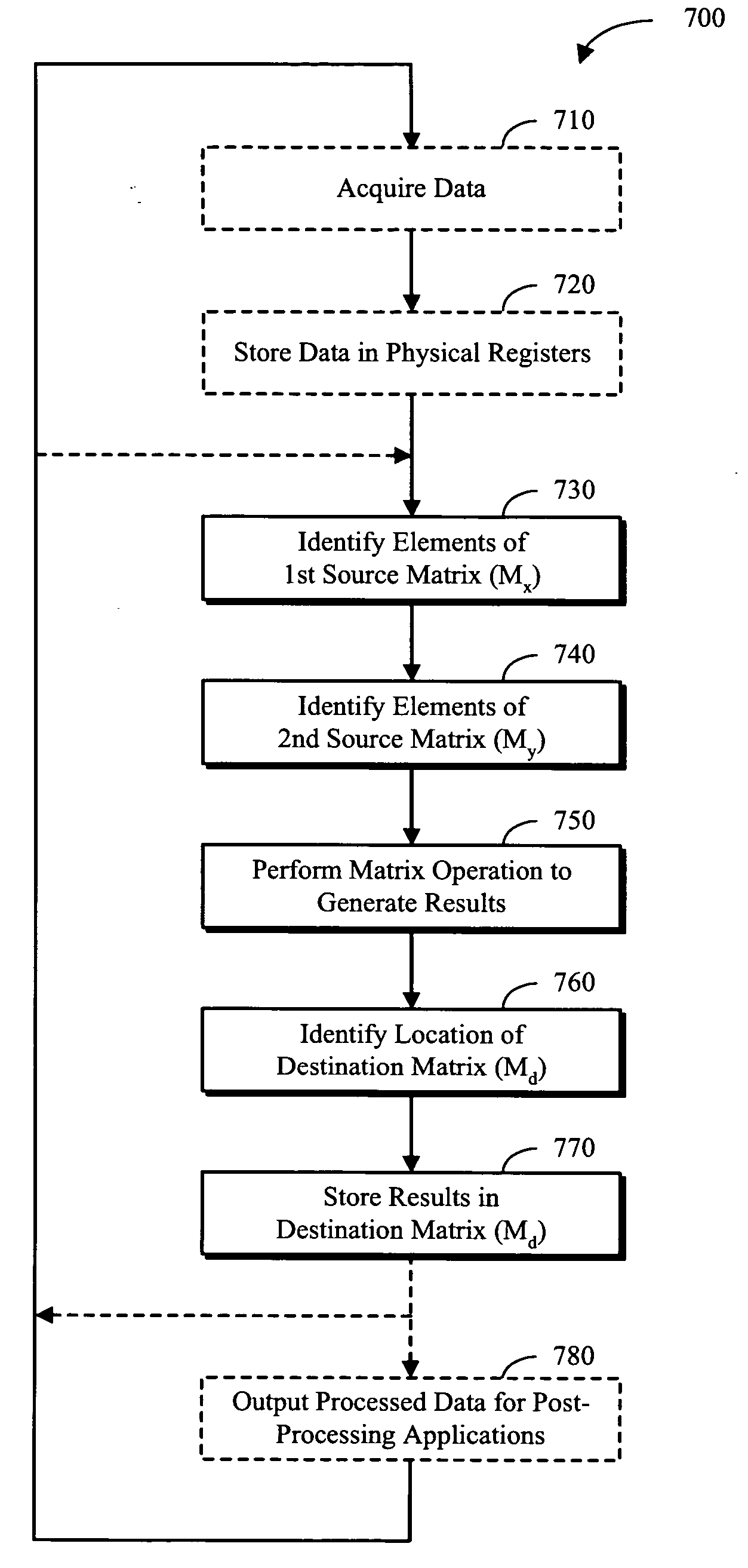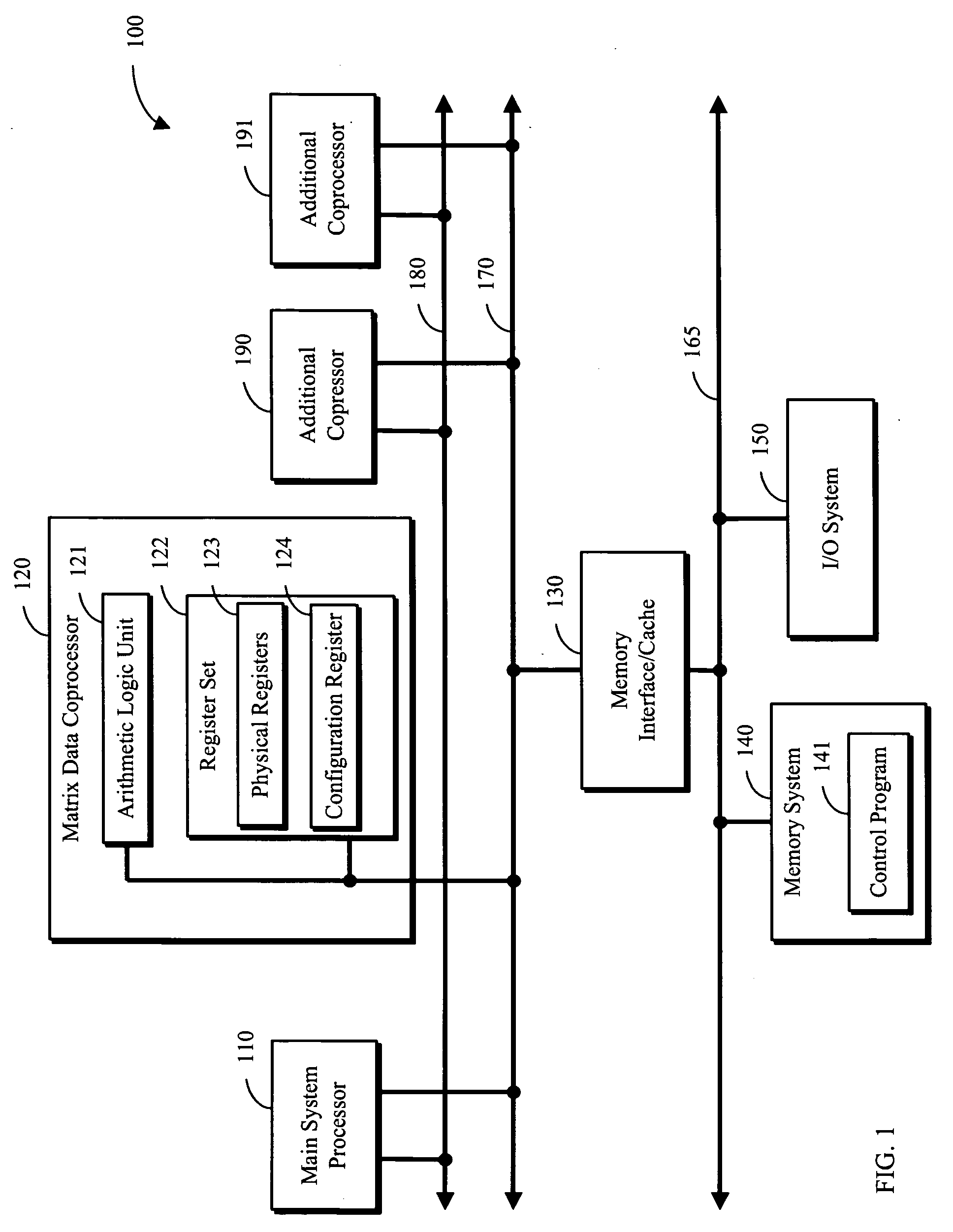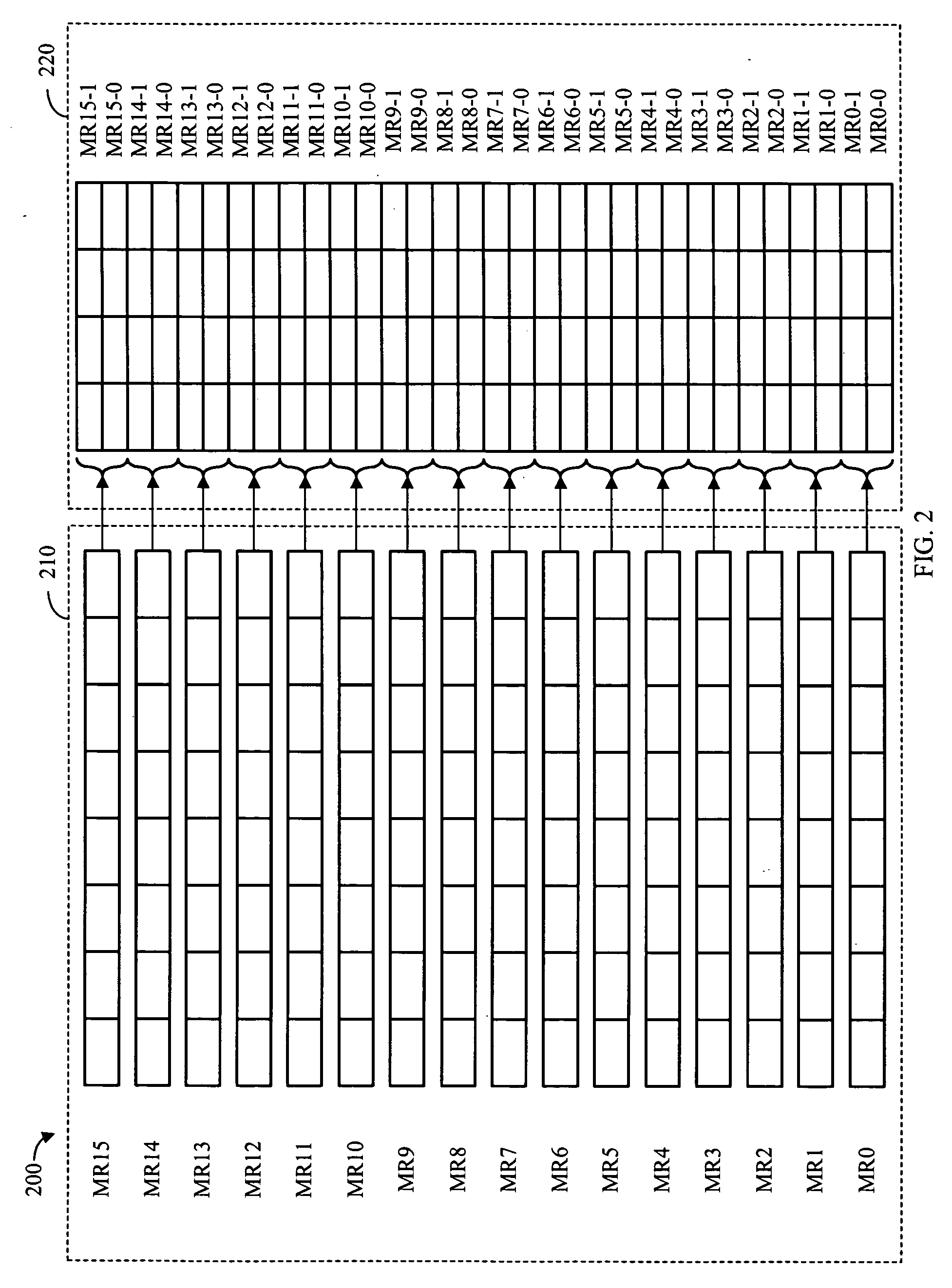Apparatus and method for matrix data processing
a matrix data and matrix processing technology, applied in the field of digital signal processing, can solve the problems of wasting processor bandwidth and other processing inefficiencies, consuming precious cycle time and energy waiting, and increasing signal processing times, so as to achieve rapid processing of polynomial operations and improve the performance of digital signal processing operations.
- Summary
- Abstract
- Description
- Claims
- Application Information
AI Technical Summary
Benefits of technology
Problems solved by technology
Method used
Image
Examples
Embodiment Construction
[0023] The matrix data processor of the present invention stores data elements in physical registers and maps the data elements to logical registers. The matrix data processor then performs data processing operations by treating the data elements in the logical registers as elements of matrices. By using a series of variables to define the size and location of the matrix elements, as well as the operation(s) to be performed on the matrix elements, the performance of digital signal processing operations can be significantly enhanced.
[0024] Referring now to FIG. 1, a matrix data processing system 100 in accordance with a preferred embodiment of the present invention comprises a main system processor 110, a matrix data processor 120, one or more optional coprocessors 190 and 191, a memory interface / cache 130, a memory system 140, and an I / O system 150. Main system processor 110, coprocessors 120, 190 and 191, and memory interface / cache 130 are coupled via a bus 170. Bus 170 provides a...
PUM
| Property | Measurement | Unit |
|---|---|---|
| speed | aaaaa | aaaaa |
| signal processing capabilities | aaaaa | aaaaa |
| size | aaaaa | aaaaa |
Abstract
Description
Claims
Application Information
 Login to View More
Login to View More - R&D
- Intellectual Property
- Life Sciences
- Materials
- Tech Scout
- Unparalleled Data Quality
- Higher Quality Content
- 60% Fewer Hallucinations
Browse by: Latest US Patents, China's latest patents, Technical Efficacy Thesaurus, Application Domain, Technology Topic, Popular Technical Reports.
© 2025 PatSnap. All rights reserved.Legal|Privacy policy|Modern Slavery Act Transparency Statement|Sitemap|About US| Contact US: help@patsnap.com



